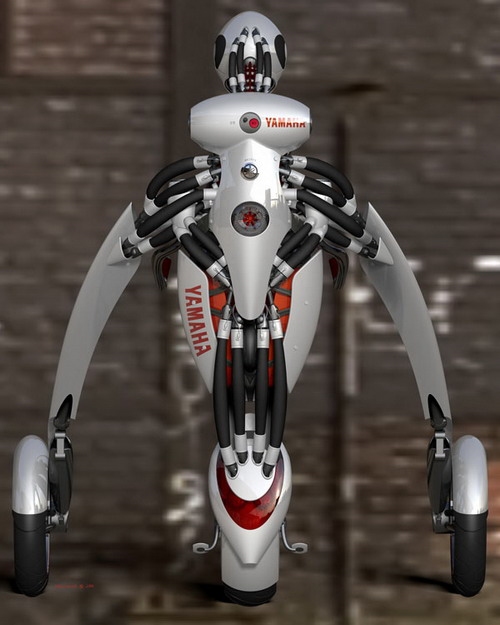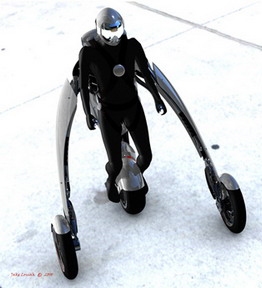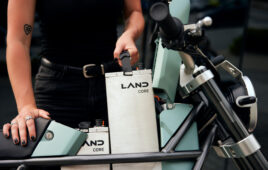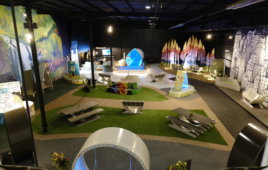At Art Center Pasadena, California, Bumsuk Lim, a former Honda designer who now teaches at the Art Center, has developed Art Center’s first official motorcycle design class, which, he admits, could turn into a fully-fledged design program. Lim has found that by combining an undervalued segment in the transportation industry and new future green technologies he can encourage his students to go where no car designer has gone before, into enviro-motorcycles.
The first pilot class just ended this past April. By removing the traditional package of 4 wheels, seated passengers, storage space, and regimented target markets motorcycle design offers up endless possibilities for exploring alternative modes of movement.

Jake Loniak is a Transportation Design student at the Art Center Pasadena in California, designed a project called ‚‘Deus Ex Machina‚’ (God Out of a Machine). His project is an electric, single passenger, vertically parking, and wearable motorcycle. The immediate impression is that of a sci-fi futuristic robot.

With seven artificial vertebrae behind the helmet that support the rider’s head you could control the “Deus Ex Machina” via 36 pneumatic muscles and 2 linear actuators with your body. Leaning forward the rider extends into the more traditional riding position but there is nothing traditional about this machine. Perhaps stemming from his background as a US Marine, Loniak’s design was inspired by Biomechatronics and nature. Biomechatronics comprises aspects of biology, mechanics, and electronics that are equally present throughout his design. The formal shape of the Deus is naturally biological because the features, the helmet, the arms, and the vertebrae recall human physiognomy, while the mechanics and electronics are worn as an exoskeleton. Exposing these elements beautifully highlights the contrast between machine and human, making quite a lyric comment on our relationship with the objects we make.

The Deus, powered by Doped NanoPhosphate batteries and ultra-capacitors, has an in-wheel motor that could supply ample torque to deliver a driving acceleration of 60 mph in 3 seconds. Recharge time is 15 minutes with a cycle time of 60 minutes, top speed, limited for now, at 75 mph.
Filed Under: Green engineering • renewable energy • sustainability, Student programs, Mechatronics





Tell Us What You Think!